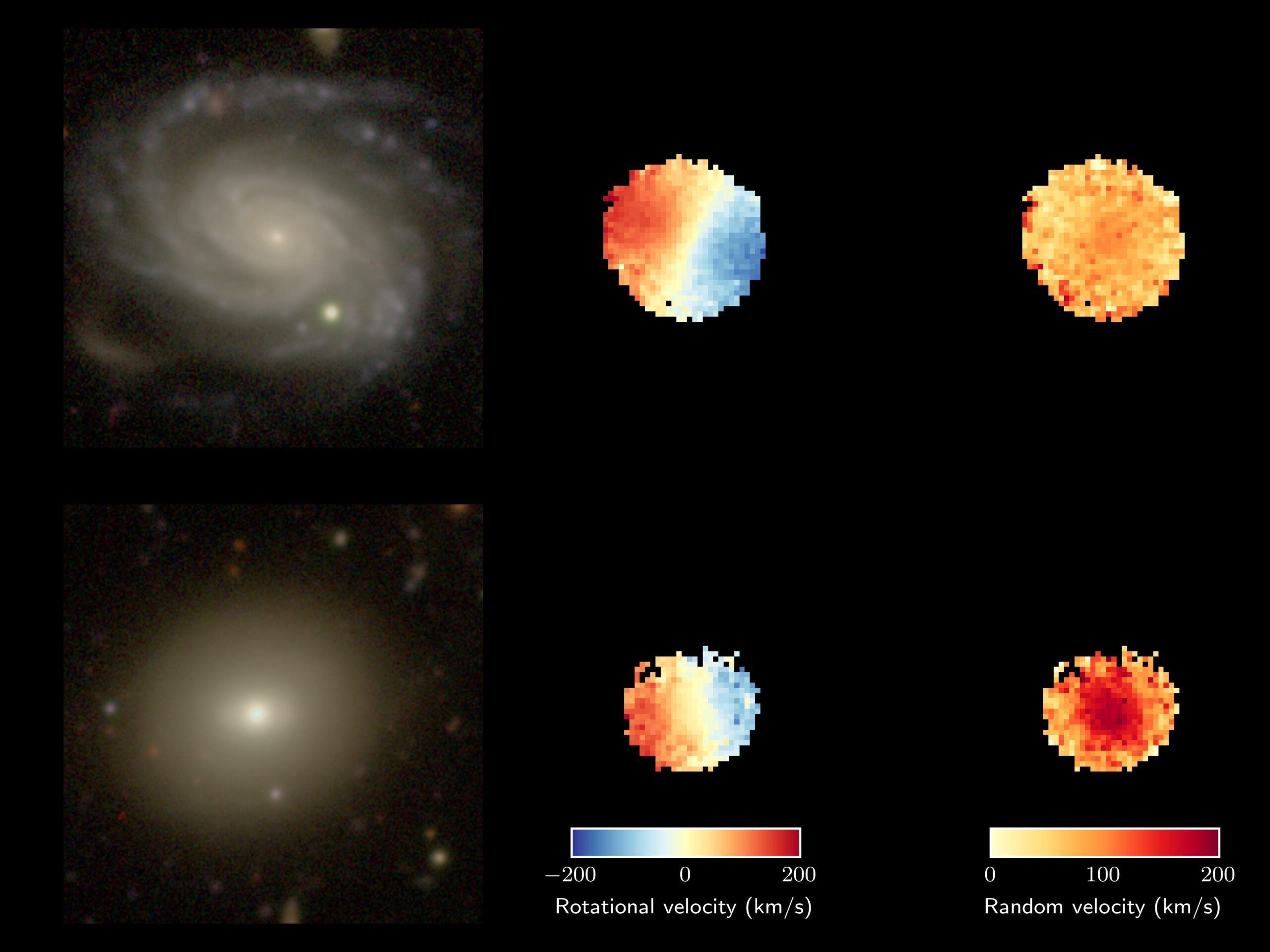Galaxies come in a variety of shapes and sizes. Some have buff, spiral arms. Others are necklace-shaped or oblong. They begin their lives rotating in an orderly fashion, but the movement of the stars eventually gets more random and less organized. Astronomers have not been able to pinpoint the reasons behind the changes, but new research poses a somewhat simple explanation–aging. As galaxies age, they tend to be more chaotic. The findings are described in a study published April 3 in Monthly Notices of the Royal Astronomical Society (MNRAS).
[Related: Listen to three breathtaking NASA images.]
“When we did the analysis, we found that age, consistently, whichever way we slice or dice it, is always the most important parameter,” study co-author and University of Sydney observational astrophysicist Scott Croom said in a statement. “Once you account for age, there is essentially no environmental trend, and it’s similar for mass. If you find a young galaxy it will be rotating, whatever environment it is in, and if you find an old galaxy, it will have more random orbits, whether it’s in a dense environment or a void.”
 A comparison of a young (top) and old (bottom) galaxy observed as part of the SAMI Galaxy Survey. Panels on the left are regular optical images from the Subaru Telescope. In the middle are rotational velocity maps (blue coming towards us, red going away from us) from SAMI. On the right are maps measuring random velocities (redder colors for greater random velocity). Both galaxies have the same total mass. The top galaxy has an average age of 2 billion years, high rotation and low random motion. The bottom galaxy has an average age of 12.5 billion years, slower rotation and much larger random motion. CREDIT: Image from the Hyper Suprime-Cam Subaru Strategic Program
A comparison of a young (top) and old (bottom) galaxy observed as part of the SAMI Galaxy Survey. Panels on the left are regular optical images from the Subaru Telescope. In the middle are rotational velocity maps (blue coming towards us, red going away from us) from SAMI. On the right are maps measuring random velocities (redder colors for greater random velocity). Both galaxies have the same total mass. The top galaxy has an average age of 2 billion years, high rotation and low random motion. The bottom galaxy has an average age of 12.5 billion years, slower rotation and much larger random motion. CREDIT: Image from the Hyper Suprime-Cam Subaru Strategic Program
When galaxies are young, they are star-forming machines. Older ones typically stop forming new stars. Earlier studies suggested that the galaxy’s environment or mass were the more important factors influencing how galaxies behave and move. According to the team, these ideas are not necessarily incorrect.
“We do know that age is affected by [the] environment. If a galaxy falls into a dense environment, it will tend to shut down the star formation. So galaxies in denser environments are, on average, older,” study co-author and University of Sydney astronomer Jesse van de Sande said in a statement. “The point of our analysis is that it’s not living in dense environments that reduces their spin, it’s the fact that they’re older.” For example, our own 13.6 billion year-old Milky Way galaxy still has a thin star forming disk and it is considered a high spin rotational galaxy. Older galaxies also move around more randomly than younger ones, no matter how densely packed with energy their environments are.
In the new study, an international team of scientists used data from observations from the SAMI Galaxy Survey. SAMI has surveyed 3,000 galaxies across a wide range of cosmic environments, which helped the team compare and contrast different types of galaxies. Having more accurate observations of galactic behavior helped them fine-tune their models of how the universe developed.
[Related: JWST images show off the swirling arms of 19 spiral galaxies.]
In future studies, the team hopes to create galaxy evolution simulations in better detail using the University of Sydney’s Hector Galaxy Survey.
“Hector is observing 15,000 galaxies, but with higher spectral resolution, allowing the age and spin of galaxies to be measured even in much lower mass galaxies and with more detailed environmental information,” study co-author and Hector Galaxy Survey lead Julia Bryant said in a statement.
This work ultimately aims to give scientists a better understanding about how the universe has evolved over billions of years and how our solar system came to be.

>>> Read full article>>>
Copyright for syndicated content belongs to the linked Source : Popular Science – https://www.popsci.com/science/aging-chaotic-galaxies/































